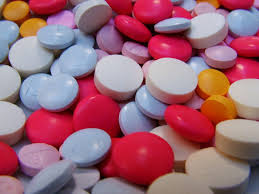Symptom Finder - Hypertension
HYPERTENSION
With the emphasis placed on the diagnosis and treatment of hypertension in the past 20 years, every physician has a good knowledge of the causes of hypertension. The list, nevertheless, may be incomplete. If consideration is to be given only to the treatable disorders, then one simply needs to remember the cardiovascular system, adrenal gland, and kidney and apply the mnemonic VINDICATE to develop a list of the causes.
1. Increased blood volume: This results in most cases from an increase in sodium in the blood from primary aldosteronism (adrenal tumors) or from secondary aldosteronism (renovascular hypertension from glomerulonephritis and other primary renal diseases or obstruction of the renal arteries by atherosclerotic plaques or fibromuscular hyperplasia). Administration of corticosteroid drugs may cause hypertension by the same mechanism. Polycythemia vera is often associated with moderate hypertension because of increased red cell mass.
2. Increased cardiac output: This mechanism accounts for the systolic hypertension in hyperthyroidism, aortic insufficiency, patent ductus arteriosus, arteriovenous shunts, and Paget disease. Excessive intake of caffeinated beverages (coffee, coke, tea, chocolate, etc.) is a common cause of systolic hypertension.
3. Increased vasomotor tone: Increased output of epinephrine and norepinephrine as occurs in pheochromocytoma is one example of this type of hypertension. Administration of sympathomimetic drugs is another. Essential hypertension is probably based on this mechanism, but increased total body sodium leading to an increased blood volume may also be a pathophysiologic mechanism. Unfortunately, this approach omits dissecting aneurysm and coarctation of the aorta, two important causes of hypertension. Systolic hypertension without a corresponding increase in diastolic pressure should be taken seriously especially in the elderly.
Approach to the Diagnosis
Take the blood pressure yourself in both arms to be sure the hypertension is real; 24-hour blood pressure monitoring is now available. The workup of hypertension includes a family history, serial electrolytes, urinalysis and urine culture, metabolic panel, lipid panel, TSH, ECG, and chest x-ray. A complete hypertensive workup is not usually performed today unless there is no family history of hypertension, the hypertension does not respond to treatment, there are other symptoms suggesting a surgical lesion (e.g., paroxysmal headaches), or there is sudden onset of hypertension in a known normotensive individual.
Other Useful Tests
1. Serum cortisol level (adrenal tumor or hyperplasia)
2. Dexamethasone suppression test (adrenal tumor or hyperplasia and
patients with ectopic ACTH secreting tumors have a poor
response)
3. Plasma renin level (renovascular hypertension)
4. 24-hour urine aldosterone (aldosterone-producing tumor)
5. Cystoscopy and retrograde pyelography (tumor or malformation of
the urinary tract)
6. Renal angiogram (renal artery stenosis)
7. CT scan of abdomen (hypernephroma)
8. Glucagon stimulation test (pheochromocytoma)
9. Magnetic resonance angiography (MRA) (renal artery stenosis)
10. Ultrasonography (hydronephrosis and renal artery stenosis)
11. CT angiography (renal artery stenosis)
Because blood pressure is maintained by an adequate blood volume, an adequate cardiac output, and appropriate vasomotor tone, it follows that hypertension may result from an increase in any one or more of these three factors.
With the emphasis placed on the diagnosis and treatment of hypertension in the past 20 years, every physician has a good knowledge of the causes of hypertension. The list, nevertheless, may be incomplete. If consideration is to be given only to the treatable disorders, then one simply needs to remember the cardiovascular system, adrenal gland, and kidney and apply the mnemonic VINDICATE to develop a list of the causes.
1. Increased blood volume: This results in most cases from an increase in sodium in the blood from primary aldosteronism (adrenal tumors) or from secondary aldosteronism (renovascular hypertension from glomerulonephritis and other primary renal diseases or obstruction of the renal arteries by atherosclerotic plaques or fibromuscular hyperplasia). Administration of corticosteroid drugs may cause hypertension by the same mechanism. Polycythemia vera is often associated with moderate hypertension because of increased red cell mass.
2. Increased cardiac output: This mechanism accounts for the systolic hypertension in hyperthyroidism, aortic insufficiency, patent ductus arteriosus, arteriovenous shunts, and Paget disease. Excessive intake of caffeinated beverages (coffee, coke, tea, chocolate, etc.) is a common cause of systolic hypertension.
3. Increased vasomotor tone: Increased output of epinephrine and norepinephrine as occurs in pheochromocytoma is one example of this type of hypertension. Administration of sympathomimetic drugs is another. Essential hypertension is probably based on this mechanism, but increased total body sodium leading to an increased blood volume may also be a pathophysiologic mechanism. Unfortunately, this approach omits dissecting aneurysm and coarctation of the aorta, two important causes of hypertension. Systolic hypertension without a corresponding increase in diastolic pressure should be taken seriously especially in the elderly.
Approach to the Diagnosis
Take the blood pressure yourself in both arms to be sure the hypertension is real; 24-hour blood pressure monitoring is now available. The workup of hypertension includes a family history, serial electrolytes, urinalysis and urine culture, metabolic panel, lipid panel, TSH, ECG, and chest x-ray. A complete hypertensive workup is not usually performed today unless there is no family history of hypertension, the hypertension does not respond to treatment, there are other symptoms suggesting a surgical lesion (e.g., paroxysmal headaches), or there is sudden onset of hypertension in a known normotensive individual.
Other Useful Tests
1. Serum cortisol level (adrenal tumor or hyperplasia)
2. Dexamethasone suppression test (adrenal tumor or hyperplasia and
patients with ectopic ACTH secreting tumors have a poor
response)
3. Plasma renin level (renovascular hypertension)
4. 24-hour urine aldosterone (aldosterone-producing tumor)
5. Cystoscopy and retrograde pyelography (tumor or malformation of
the urinary tract)
6. Renal angiogram (renal artery stenosis)
7. CT scan of abdomen (hypernephroma)
8. Glucagon stimulation test (pheochromocytoma)
9. Magnetic resonance angiography (MRA) (renal artery stenosis)
10. Ultrasonography (hydronephrosis and renal artery stenosis)
11. CT angiography (renal artery stenosis)
Because blood pressure is maintained by an adequate blood volume, an adequate cardiac output, and appropriate vasomotor tone, it follows that hypertension may result from an increase in any one or more of these three factors.

